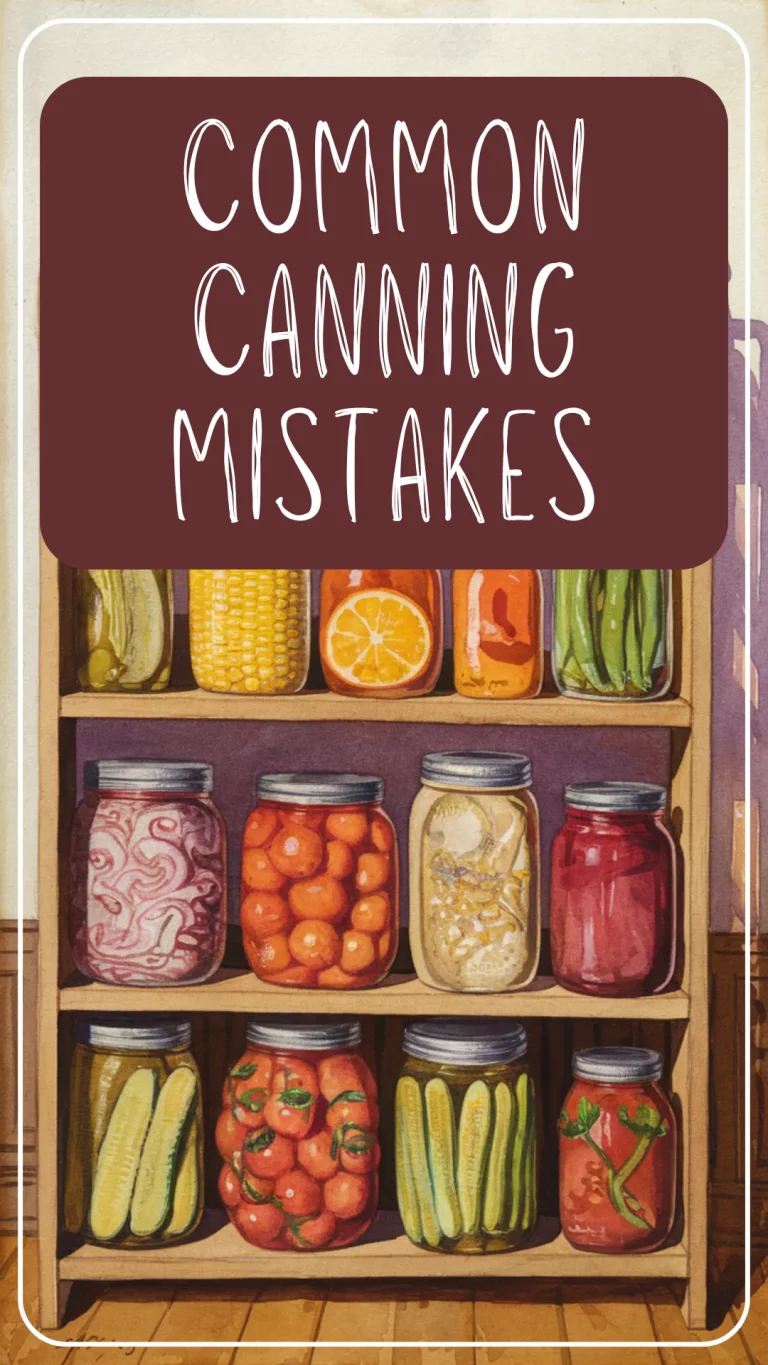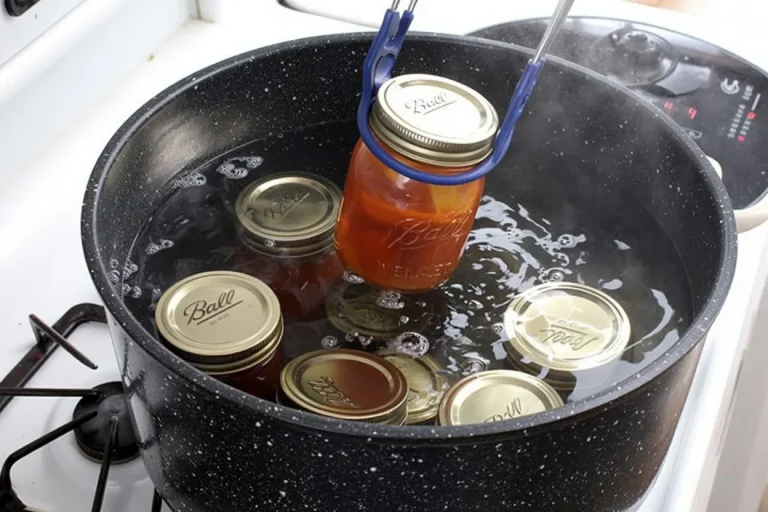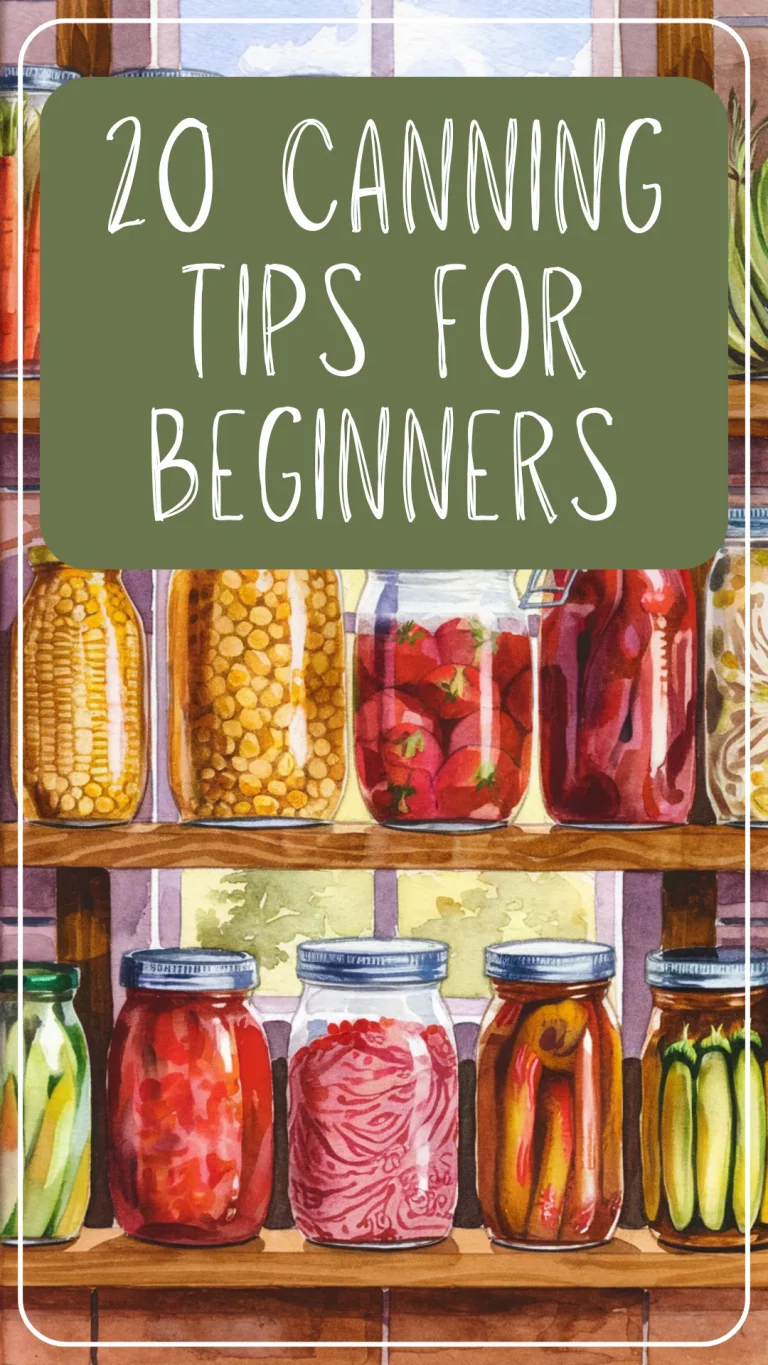What is the Headspace in Canning?
Headspace is the empty space between the top of the food (or liquid) and the rim of the jar. It’s important for creating a safe seal and preventing spoilage. Too much or too little headspace can cause sealing issues, so always follow the recipe and measure it before processing.
Inside this post:
What on Earth is Headspace?
If you’ve been reading canning recipes and keep seeing “leave ½ inch of headspace” and thinking… head-what now?
You’re not alone.
When I started canning, I honestly thought it was something to do with meditation. Turns out—it’s just one of those funny old-fashioned terms that actually matters a lot for safe canning.
Let’s break it down together.
So, What Is Headspace?
Headspace is the space between the top of the food (or liquid) and the top rim of the jar.
It’s that little pocket of air that helps your jar seal properly during processing. Too much or too little, and things can go wrong.
Why Does It Matter?
Here’s the quick version:
- Too little headspace: Food might bubble up and leak out under the lid. That can mess with the seal.
- Too much headspace: The jar might not push all the air out when it’s processed, which means it won’t seal properly—and the food inside could spoil.
Think of it like baking. Just like you need room for a muffin to rise, your jars need room to do their sealing magic.
How Much Headspace Do I Need?
It depends on what you’re canning:
- ¼ inch for jams, jellies, and fruit butters
- ½ inch for fruits, pickles, and tomatoes
- 1 inch for low-acid foods like meats, beans, and soups (pressure canned)
Most recipes will tell you exactly how much, so you don’t have to guess.
How Do I Measure Headspace?
You don’t need anything fancy!
- You can use a headspace measurer (they usually come in canning kits)
- Or just use a ruler or even eyeball it once you get the hang of it
Tip: Hold your jar at eye level and check from the side—it’s way easier than looking down from the top.
What Happens If I Mess It Up?
No panic. If you notice you overfilled a jar, just grab a clean spoon and take a little out before sealing.
If you’ve underfilled it, top it off (carefully!) with more of whatever’s in the jar or a matching hot liquid like syrup, juice, or water.
And if the jar’s already been processed and the headspace was way off? Watch the seal closely. If it fails, just refrigerate and use it up quickly—or freeze it.
Final Thoughts
Headspace might sound like a small detail, but it’s one of those little things that makes canning safer and more successful.
Once you do it a few times, it becomes second nature. Like wiping sticky fingers or pouring juice with one hand while holding a toddler with the other—you’ve got this.
Read Next on The Strawberry Pantry:
How to Store Your Home Canned Food Safely
Now that your jars are sealed, here’s how to store them to keep everything fresh and safe.
The Jars Didn’t Seal—Now What?
Don’t panic! Here’s what to do when a lid doesn’t seal, plus safe ways to save your food.
How to Water Bath Can for Beginners
Never water bath canned before? This post will walk you through the process, step-by-step.
Can I Can That? A Beginner’s Guide to What Can’t Be Canned at Home
Some foods just aren’t safe for canning—find out which ones and why, plus safer alternatives.






